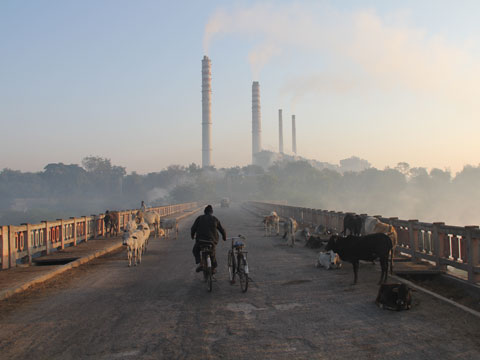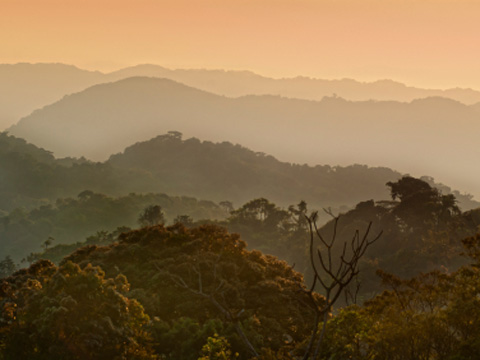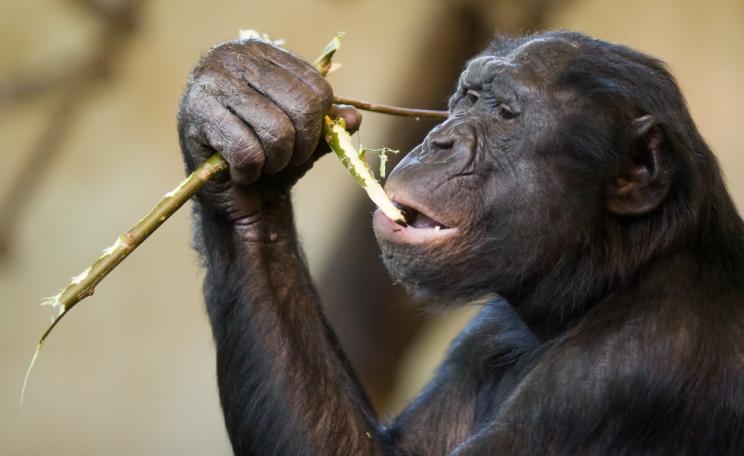Many of Africa's enigmatic species face threats as the continent modernises
The reported crash of wildlife populations in the Maasai Mara reserve in Kenya is the most well-publicised example of a crisis that’s unfolding throughout East Africa.
The region’s 'Big Five' species and other wildlife are currently facing their most serious crisis in modern times. Significant populations of elephants, lions, rhinoceros and other species are on the decline, threatening not only the regions fragile ecosystems but also economic livelihoods that depend on ecotourism revenue. Elephant populations are particularly vulnerable.
Following the 1989 ban on ivory, the poaching of sub-Saharan African's elephant population was reduced to a mere trickle. However, over the past couple years there has been dramatic increase in poaching activities and a sharp decline in elephant populations.
In May this year, a shipment of 115 pieces of illegal ivory (packed into 13 metal boxes and weighing 1,304 kilograms) was seized at Jomo Kenyatta International Airport. The ivory was destined to Lagos, Nigeria purportedly from the Brunei and Papua New Guinea Embassies in Nairobi. The contraband was disguised as diplomatic luggage. However, there are no such embassies in Kenya.
This past March 2,033 kg of elephant ivory (247 tusks up to two meters long) was seized by Thai Customs officials at the Bangkok seaport on the Chao Phraya River. This had been shipped through the Mombasa sea port. The elephant tusks were valued at over 274 million Kenya Shillings being smuggled through a Bangkok port from Kenya was hidden in a shipment of frozen fish. The Kenya Wildlife Service (KWS) says that the ivory seized may be equated to at least 123 elephants. However, Kenyan authorities were unsure if all the animals were poached in Kenya.
According to Kenya Wildlife Service (KWS) figures in 2010 some 187 elephants were illegally killed. By April this year, that figure stood at 80 elephants.
But Kenya’s neighbour to the south is worse off. Tanzania has been implicated as the source of nearly 50 per cent of the ivory seized worldwide. According to a report, seizures involving Tanzania between 1989 and 2010 represent one third of all ivory seized globally, and Tanzania ranks first among African countries in terms of the total volume of ivory reported by large-scale seizures.
China and the rise in ivory smuggling
China has a significant presence in East Africa. Chinese companies are upgrading Kenya’s road network, while Chinese contractors aim to participate in refinery projects and the development of a major port at Lamu on the coast. In neighbouring Tanzania, China’s Sichuan Hongda signed a $3 Billion USD coal and iron ore deal at the beginning of this year. They might also invest $3.5 billion in a 600-megawatt power plant. In Uganda various Chinese construction projects are in full swing. China is also expected to participate in the country’s new found oil wealth.
This increasing Chinese presence in East Africa and other areas of the continent has lead to a dramatic increase in ivory smuggling. China's nouveau rich have developed a voracious appetite for ivory ornamental objects. In fact, over the past couple years numerous Chinese nationals have been arrested in the possession of illegal ivory in East Africa. This new demand from China’s nouveau rich has driven the price of ivory to $700 a pound or more and has led to rampant poaching of elephants in some regions.
Other 'Big five' species are also at serious risk.
In Tanzania, there have also been recent seizures of rhino horn that is suspected to have come from the Selous Game Reserve in southern Tanzania (part of that coffin smuggling episode that took place in Kenya in 2009 also included black rhino horns). Rhino horns are used by the Chinese for their traditional medicines and in some Middle Eastern countries for ornamental purposes like the handles of daggers.
Stopping the illegal trade
Trying to stop the illicit trafficking of ivory is difficult. It requires knowledge of the geographic origin of the ivory itself. Pioneering research by Dr. Sam Wasser, Director of the Center for Conservation Biology at the University of Washington, Seattle has developed special DNA analysis techniques in tracing the origin of illegal elephant ivory.
This has lead to discovery that African elephant ivory are coming from certain 'Hotspots' in sub-Saharan African rather than all over the continent's forest and savannas areas as was previously thought. Experts and law enforcement officials have discovered that sophisticated criminal networks have targeted certain African elephant populations for their ivory.
Last May, the Ivory and Rhinoceros Enforcement Task Force of the Convention on International Trade in Endangered Species of Wild Fauna and Flora (CITES) met in United Nations Environment Programme headquarters (Gigiri, Kenya) to discuss urgent actions against crimes targeting elephant and rhino populations
'Despite considerable successes on the part of the law enforcement community, the smuggling of elephant ivory continues to occur at significant levels and those behind the illegal trade do not appear to be deterred by the regular losses they are suffering at the hands of border control agencies,' says an Interpol statement announcing a new CITES initiative.
According to a recent investigation reported in TIME magazine, the Chinese are secretly attempting to breed imported white rhinos commercially for their horns to be used in medicine - a scheme that would be in direct contravention of national and international laws, and which contradicts statements made in 2010 by Chinese officials at an international meeting and representatives of the traditional Chinese medicine industry).
Crop pesticide killing wildlife
Lion populations in East Africa have declined rapidly over the past decades. Carbofuran (Furadan) poisoning has been the main culprit. According to the Kenya Wildlife Service, Furadan has killed 35 per cent of Kenya’s lions, while unspecified poisons killed another 3 per cent. Since 2002, when they numbered 2,749, the lion population has declined by 28 per cent. In their National Conservation and Management strategy for Lions and Hyenas, the Kenya Wildlife Service estimates that only 1,970 lions remain across the country Carbofuran is a valuable pesticide for agriculture - it keeps insects from destroying food crops like Irish potatoes, soybeans and maize (corn). It replaced DDT when DDT’s negative environmental impacts were realised back in the 1960s and early 1970s.
But carbofuran is highly toxic to wildlife, and not only to lions but fish, mammals, birds and many non target invertebrates due to unintended effects of labelled use, misuse due to farmer ignorance, and abuse. Not only are these big cats affected but so too are vultures, birds of prey and wading birds.
When members of a pastoralist’s herd is killed or threatened by marauding lions (or leopards), herders like the Bahima of Uganda or the Samburu of northern Kenya, revenge by slaughtering a cow and lacing the carcass with a deadly poison like Carbofuran. However, this not only kills the predatory lions but also scavengers such as vultures.
Such episodes have become commonplace and look set to continue.
'Although suspects have admitted to poisoning carcasses to kill lions, we are not aware of any culprits having ever been brought to justice', says Dr Paula Kahumbu, Executive Director of Wildlife Direct.
The desperate situation among some East African herders is not about to change anytime soon.
Pastoralists in East Africa not only have to deal annually with what experts label 'dry season stress' but also the crisis of massive livestock deaths due to current and recurrent severe drought conditions. Tens of thousands of livestock have starved and died in recent years. To make matters worse, herding communities are the most vulnerable to the present food shortages and high food prices. So to lose livestock to predators in this climate of hardship and austerity is only adding insult to injury.
Increases in livestock numbers (cattle, sheep and goats) and their widening distribution have brought about competition between them and surrounding wildlife populations. This is bad news for wildlife inhabiting drought-prone areas as it could lead to starvation. Experts suspect that it’s this scenario that caused Kenya’s buffalo population to collapse.
Poaching and climate change in Uganda
But it’s not only illegal hunting and trade that are fuelling wildlife declines.
In Uganda, some species have declined due to an unfortunate combination of global climate change and rampant poaching. A generation ago Kidepo Valley National Park (KVNP) in northeast Uganda’s semi-arid Karamoja region, was one of the most biodiversity diverse areas of Uganda. But during the politically unstable 1970s and 80s the slaughter began in earnest. Much of the park’s wildlife was obliterated. This includes the Northern White Rhino, Roan Antelope, and Cornet’s Gazelle. Others such as the Kudu, Eland and Giraffe were reduced to insignificant numbers as to be almost nonexistent.
Kidepo once thriving populations of plains zebras have declined dramatically over the last generation. Less than 100 zebras remain in Kidepo Park today, contrast that with an estimated population of over 500 in the 1980s. So alarming is the recent death rate of zebra colts that Scott McMillan, an American conservationist and Founder/President of the Kidepo Wildlife Foundation (KWF), predicted that if this dire situation continues then, 'the zebra population in KVNP will cease within 25 year'.
What wildlife poachers could not complete, man-made climate change is trying too. During the mid-1990’s, the “El Nino” rains transformed Kidepo’s semi-arid, short grass environment to that of high grass savannah. Many of the Kidepo prey species are not well adapted to this type of habitat. This altered significantly the park’s hunting dynamics. Predators such as lions lack the prey they traditionally hunted and resorted to hunting easier quarry like zebras and warthogs. For the zebras, it became difficult to see predators stalking through the tall grass. This situation is self reinforcing and perpetuates the decline of the zebra population.
Decline of predator species
McMillan estimates that during the last half century, Kidepo’s prey species had either been reduced to 10 per cent of their original numbers or they have been totally annihilated. This tragedy as led to a fractured ecosystem.
And it isn’t just the big beast of the plains whose populations are declining. Raptors are also fighting for survival in the face of poisoning, technological advancement and big business interests. Raptors are umbrella species - they are important indicators that an ecosystem is doing well and providing enough food for all other species. This is because of their huge ranges.
Vulture poisonings in Kenya have been recorded in Laikipa, Tsavo, Athi River, Masai Mara and Amboseli these birds are long lived and are essential to ecosystem functioning in Kenya’s wild areas. Scientist has documented significant declines of other birds of prey including eagles and owls.
Vultures are indispensable if humans want to keep the grasslands and savannas healthy. Without these raptors rotting carcasses would piled up, attracting disease and foul smells in places where tourists yearn to go. Sadly, vulture population, as is the case in India, has been dwindling to the extent that some are termed nearly extinct, threatened or vulnerable.
The African Fish Eagle population fell from 200 in the 1970s to just 67 in 1998, a 57 per cent decline. The Bearded vulture or Lammergeier as it is also known was once commonly found in the indigenous forests of Kenya such as the Mau, Cheranganis and Elgon. Today, there is just one pair in the country surviving in the Cheranganis. Toxic carbofuran is also the culprit in this case. Scientists of the Raptor Working Group of Nature Kenya have documented an alarming decline of up to 60 per cent of Kenya’s vultures primarily due to the abuse of carbofuran
The Martial Eagle, the largest raptor, has a home range of 300 square kilometres. It lays just one egg a year and most chicks die within the first year due to a number of reasons, ranging from human persecution to food for other predators.
The booming horticulture industry at Lake Naivasha in western Kenya has altered significantly the lake and its environs, and yet it is a Ramsar Site - a water body of international importance to migratory birds and water-fowls. Furthermore, as we humans are in pursuit of green technology to seek clean energy like wind farms and biofuels it’s a catch-22 situation since it comes at great cost to the environment. The huge windmills on wind farms, though a source of clean energy, have killed many raptors as they fly into the rotating blades.
Human population pressure
Human population growth and the need to feed more mouths have also led to decreasing wildlife numbers. For example, an expansion of cultivation, settlements and fences has also lead to declining wildlife populations in Kenya, Tanzania and elsewhere in East Africa.
In Tanzania’s, for example, the Maasai Steppe of Tarangire-Simanjiro Plains, cultivation in areas traditionally used by wildlife has been widely adopted. The causes for this are many.
'Recurrent severe droughts have killed many pastoral livestock and render many families destitute,' says Joseph Ogutu. 'The skyrocketing of prices of maize has forced many families to adopt cultivation after droughts to reduce their vulnerability to droughts. Shifting food preferences among pastoral communities, such as the Masai, who traditionally fed on milk, meat and blood, is further pushing the adoption of cultivation. Human population growth is reducing the number of livestock per person in pastoral households, thus making it impossible for them to depend solely on livestock and livestock products, which is forcing many families to adopt cultivation.'
| READ MORE... | |
 |
NEWS ANALYSIS UN-backed coal power station linked to deforestation and land grabbing An Ecologist investigation reveals how the largest coal power plant to be awarded UN carbon credit funds is displacing poor communities and destroying forest in India. Luke Starr reports from Madhya Pradesh |
 |
NEWS ANALYSIS FILM The carbon con: the true cost of offsetting Exclusive film looks at allegations that a coal power project in central India, approved under the UN's Clean Development Mechanism, is destroying forests and livelihoods |
 |
NEWS ANALYSIS Common infections will be 'untreatable' if antibiotic misuse continues Scientists in new warning on post-antibiotic age as campaigners call for stronger controls on excessive use in intensive farming |
 |
NEWS ANALYSIS What's happened to Guyana's rainforest deal with Norway? Back in 2009 it was heralded as a potential model for REDD+ and reducing rates of deforestation but Norway's deal with Guyana appears to have made little progress |
 |
INVESTIGATION Wildlife special Is there room for wildlife as Africa grapples with development? How poaching for the illegal wildlife trade, intensive farming, climate change and population growth all threaten Africa's unique wildlife |








